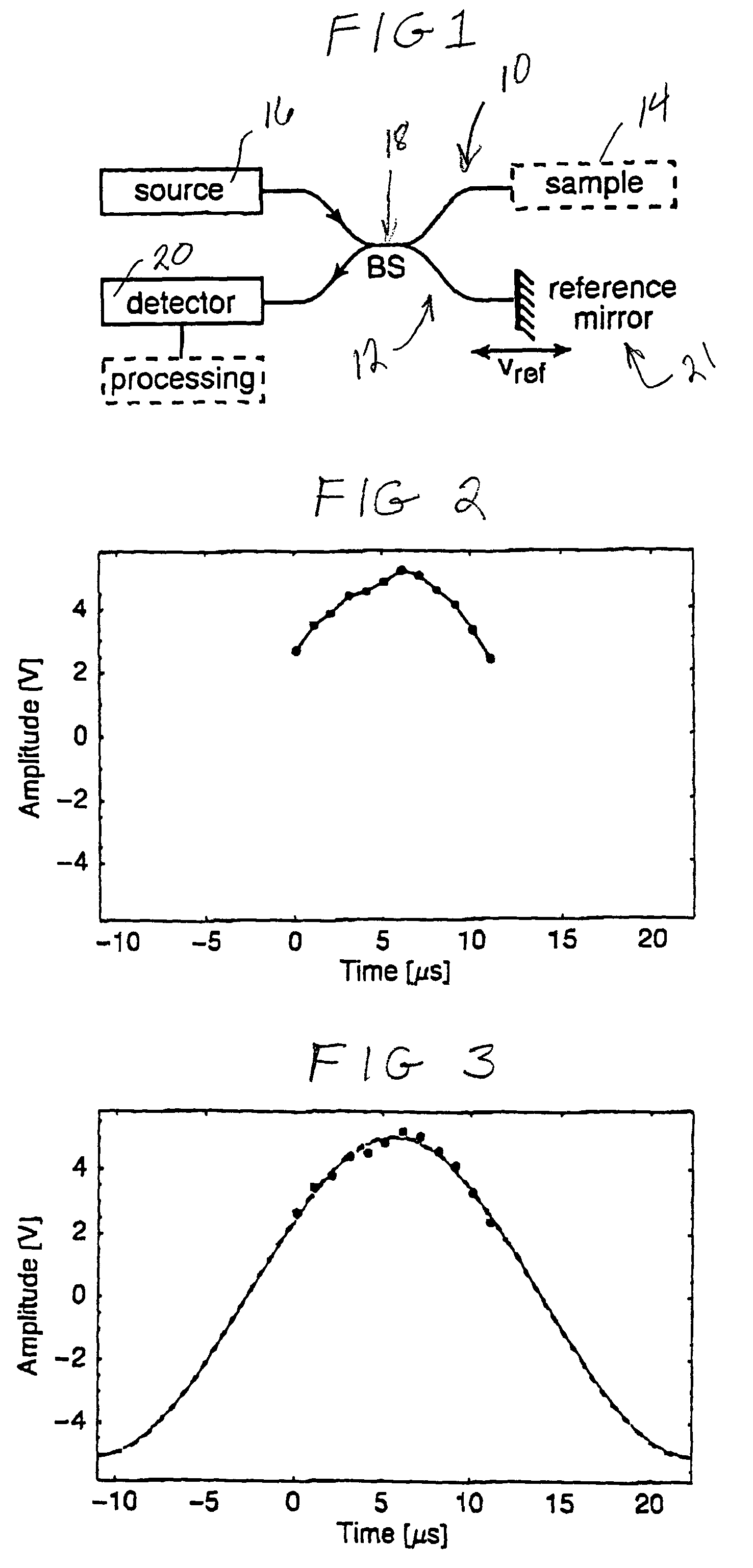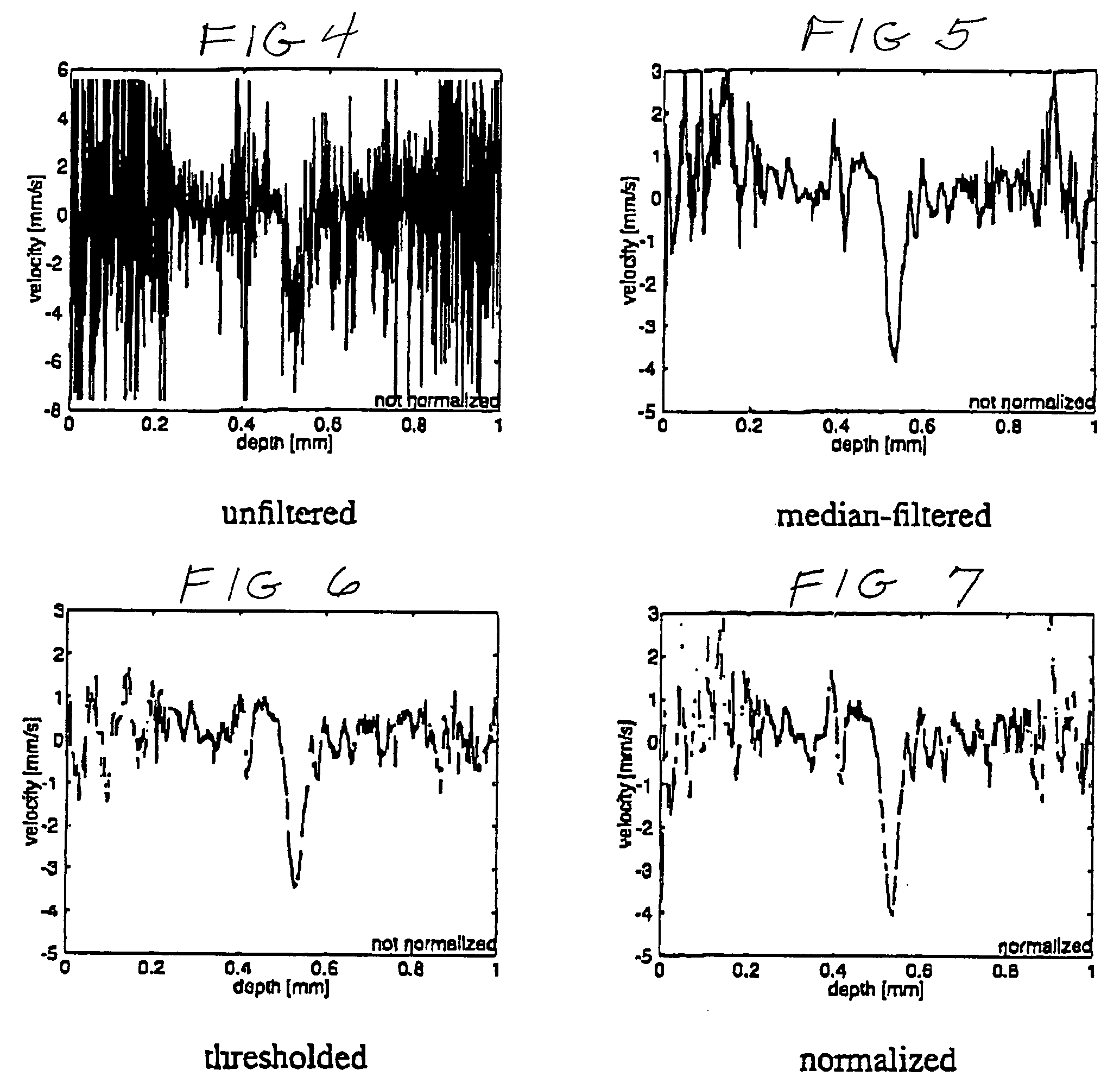Signal processing using non-linear regression with a sinusoidal model
a nonlinear regression and signal processing technology, applied in the field of signal processing methods, can solve the problems of requiring expensive technology, unable to obtain both the high spatial resolution needed to see small vessels and the small frequency shifts needed to quantify, and the frequency domain is limited by the inverse duality, so as to achieve high spatial resolution and reduce the cost of the system and method. , the effect of high frequency resolution
- Summary
- Abstract
- Description
- Claims
- Application Information
AI Technical Summary
Benefits of technology
Problems solved by technology
Method used
Image
Examples
Embodiment Construction
[0019]The signal processing system of the present invention focuses on a small section of a complex signal, such as an OCT signal, and models this small section of the signal as a single sine wave for time domain processing. This is opposed to prior methods using frequency domain processing of OCT signals that sample multiple sine waves of multiple frequencies, amplitudes, and phases. The time domain processing method of the present invention is described in detail below for an OCT signal, but the method is not limited thereto. The signal processing method of the present invention can be used for signals, the frequency of which is known within a given range. The size of the frequency range, within which the frequency sought is known to be, varies depending on the signal to noise ratio such that the higher the signal to noise ratio, the greater the frequency range can be.
[0020]An OCT system that generates the OCT signal to be processed as shown in FIG. 1 is based on a Michelson inter...
PUM
 Login to View More
Login to View More Abstract
Description
Claims
Application Information
 Login to View More
Login to View More - R&D
- Intellectual Property
- Life Sciences
- Materials
- Tech Scout
- Unparalleled Data Quality
- Higher Quality Content
- 60% Fewer Hallucinations
Browse by: Latest US Patents, China's latest patents, Technical Efficacy Thesaurus, Application Domain, Technology Topic, Popular Technical Reports.
© 2025 PatSnap. All rights reserved.Legal|Privacy policy|Modern Slavery Act Transparency Statement|Sitemap|About US| Contact US: help@patsnap.com



